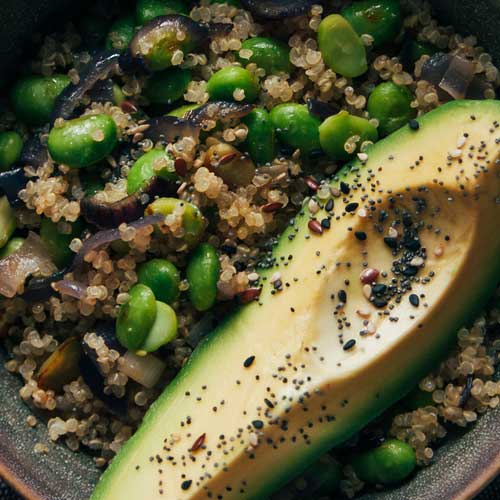
Stress is known to be harmful to health and to be involved in the development and progression of a number of diseases.
The main toxic culprit of stress is the chemical cortisol, which is released by the adrenal gland into the blood during the experience of stress. Cortisol initiates stress responses in the brain, and if these responses occur too frequently, as occurs with chronic stress, there are long-term changes in both the cells of the brain and in the cells of the immune system. Under acute, short-term stress, the functioning of the immune system is actually enhanced. However, under chronic or long-term stress conditions, the functioning of the immune system diminishes.
Minimizing stress is important not just because stress is unpleasant, but also because it has serious long-term health implications. For those who have long-term endometriosis, their perceived level of stress tends to increase with the number of interventions and surgeries they endure. However, these strategies for minimizing the symptoms associated with endometriosis are often beneficial, so abstaining from those interventions could also produce stress. Luckily, there are a number of techniques that are highly beneficial for reducing stress and its related health issues. Among these techniques are: exercise, meditation, self-regulation training, and psychotherapy. For many, an individual technique will work to reduce stress, whereas others find that a combination of techniques is most beneficial.
“Minimizing stress is important not just because stress is unpleasant, but also because it has serious long-term health implications.”
Endometriosis causes stress in those who suffer from the disease for a number of reasons. The symptoms involve pain, which is known to be highly psychologically distressing. The disease can also have troubling implications for personal relationships, fertility, and work capabilities. Physiological tests have been employed to detect stress levels in those with endometriosis. For instance, electroencephalography, which involves the placement of electrodes on the outside of the skull to monitor brain activity, has shown responses consistent with high levels of stress in endometriosis patients. Both skin and muscle responses have shown similar results as well. It is therefore clear that those with endometriosis tend to experience higher than normal levels of stress.
Given that stress tends to exacerbate health problems, some scientists and physicians argue that techniques for minimizing stress may be helpful for people with endometriosis, particularly those who show certain types of stress reactivity and anxiety. If these people can learn how to psychologically manage stressful situations so that their bodies do not have harmful physiological responses to stressors, there could be significant health benefits.
Whether exercise has protective effects against endometriosis is not well understood. Though some claim that exercise can prevent the development and progression of the disease, there is also data that suggest that exercise is not sufficient to provide this type of benefit. However, exercise is known to have significant positive psychological effects and to reduce stress. Thus, at least for the group of endometriosis patients who do experience high levels of stress, exercise is likely a good option.
Though there is not yet an abundance of data showing that stress directly causes the initial development of endometriosis, it is becoming clear that stress is an important contributing factor in the disease. Minimizing stress is therefore likely to be beneficial for those suffering from or at risk of developing endometriosis.
The PMS Mixtape Volume 1
There are variety of moods one goes through when experiencing PMS - sad, angry, tired and vulnerable, just to name a few. So we’ve decided to create some playlists to match how you may be feeling. Yes, it’s The PMS Mixtape!
Instead of going with anything obvious like “Sunday Bloody Sunday,” this first mix is a much more subtle collection of soothing female vocals, starting off with Jenny Hval’s beautiful ambient musings on menstruation. The vibe is tranquilo, Spanish for “Take it easy,” so put it on when you want to chill things out a bit.
| Prep Time | 30 min |
| Servings |
bites
|
- 1 cup cup dried apricots
- 2 tsp water
- 1/2 cup unsweetened flaked coconut
- 1/4 cup ground pistachio
Ingredients
|
|
- In the food processor, add the dried apricot and blend on high until a ball forms.
- Add the water.
- Blend again. You will see the apricot paste start sticking to the sides.
- Using a spatula, transfer the apricot paste into a medium sized bowl. Add the coconut flakes to the bowl and mix until it becomes more uniform.
- In a separate small bowl, add the crushed pistachio.
- Using your hands, take some of the apricot mix and roll it in your palms until it forms a sphere. Make them as big or small as you like but try to keep them similar in size.
- Take each sphere and roll it in the pistachios until is coated from the outside.
- Place in a bowl and enjoy!
| Cook Time | 30 min |
| Passive Time | 30 min |
| Servings |
oatmeal triangles
|
- 1 cup steel-cut oats
- 1 cup water
- 1 1/2 cups almond milk (or substitute nut/rice/soy milk)
- 1 tsp cinnamon
- 1/4 tsp sea salt
- 2-3 tablespoons olive oil
- maple syrup
- strawberries (optional)
- walnuts (optional)
- shredded coconut (optional)
Ingredients
Toppings:
|
|
- In a medium pot, with a heavy bottom, add the water and the almond milk and bring it to a boil.
- Turn down the heat so the liquid is simmering, and add the oats, sea salt and cinnamon. Cover.
- Take an 8 inch square pan and line with parchment. Set aside for when the oats are done.
- Cook the oats for 30 minutes. Stir occasionally during the first 20 min. In the last 10 minutes you have to stir constantly so it doesn’t stick to the pot and it gets creamy.
- As soon as they are done, pour the oats into the parchment lined pan. Level it out evenly using a spoon.
- Cool for 30 minutes on the counter. Then pop in the fridge for another 30 minutes. This will allow the oatmeal to firm up and set.
- Lift the parchment out of the pan carefully and set on a cutting board. With a large smooth knife, cut into four squares, then cut those squares into triangles.
- Heat a large pan with the olive oil, once hot, add the triangles. Don’t crowd the pan and work in batches if needed.
- Cook each oatmeal triangle for 3-4 minutes per side until browned.
- Add to a serving platter and sprinkle on the strawberries, coconut & walnuts. Drizzle the maple syrup on top and enjoy while still warm.
| Servings |
skewers
|
- 8 cups cauliflower florets (around half a cauliflower head)
- 1 tsp garlic powder
- 2 tsp turmeric
- 6 tablespoons sesame oil
- 1/2 tsp salt
- 1/4 cup cilantro (packed)
- 2 tablespoons lime
- 2 tablespoons tahini
- salt to taste
Ingredients
|
|
- Cut the cauliflower into florets big enough to skewer.
- In a big bowl add the garlic powder, turmeric, oil and salt. Mix well.
- Add the florets to the marinade and mix well. Make sure all the florets are coated.
- Add 4-5 florets per skewer.
- To make the sauce, add the cilantro, lime, tahini and a pinch of salt to the food processor. Blend on high until smooth. Set aside in a small bowl.
- Heat the grill on high, and then add the skewers. Cook the cauliflower on medium heat 4-6 minutes per side.
- When done, add the skewers to a serving platter and drizzle some of the sauce lightly over using a spoon. Save the rest to serve for dipping.
If using bamboo skewers, soak them for half an hour before use so they don’t burn on the grill.
If you want to grill them inside, use a griddle or pan and add some sesame oil to prevent sticking.
| Prep Time | 30 min |
| Cook Time | 50 min |
| Servings |
people
|
- 1 beet medium or large
- 1 tsp olive oil (to rub the beet with)
- 1 large garlic clove
- 2 cans chickpeas (3 cups cooked chickpeas)
- 1/2 cup tahini
- 1/4 cup freshly squeezed lemon juice
- 1/2 tsp salt
- 1/2 cup water (to be used as needed)
Ingredients
|
|
- Preheat the oven to 400°F. Wash the beets, rub with olive oil and wrap loosely but securely (so the steam doesn’t escape) in tin foil. Place in a pan in the oven and bake for around 50 min or until the beets are tender. You can gauge the doneness by sticking a fork in the beet (through the foil). If the fork goes in easily, they are done. Remove from the oven and let them cool.
- After they cool, using a knife, peel and discard the outside skin, and cut the beet into cubes.
- If you are using canned chickpeas, put them in a colander or strainer and wash them well. Make sure they are well drained.
- Place the garlic in the food processor and pulse until it is ground up. Then add the chickpeas, tahini, lemon juice, and salt. Let the processor run for a few minutes. Occasionally, push down the chickpeas from the edges to make sure it all gets processed. This is the point to gauge how thick or loose you want the hummus. Add 1-2 tablespoons of water at a time and let the processor run, check the consistency, and adjust with more water as needed. Once it is the consistency you like, let the processor run for a few more minutes to make it as smooth as possible.
- Finally, add the cubed beets to the food processor and blend until it is smooth again.
Even though the recipe calls for one beet, make as many as you like and reserve for Greek salads, or snacking. Add more beets to increase the flavor as you like.
We recommend adding a variety of thinly sliced vegetables instead of chips or crackers for a healthy snack.



